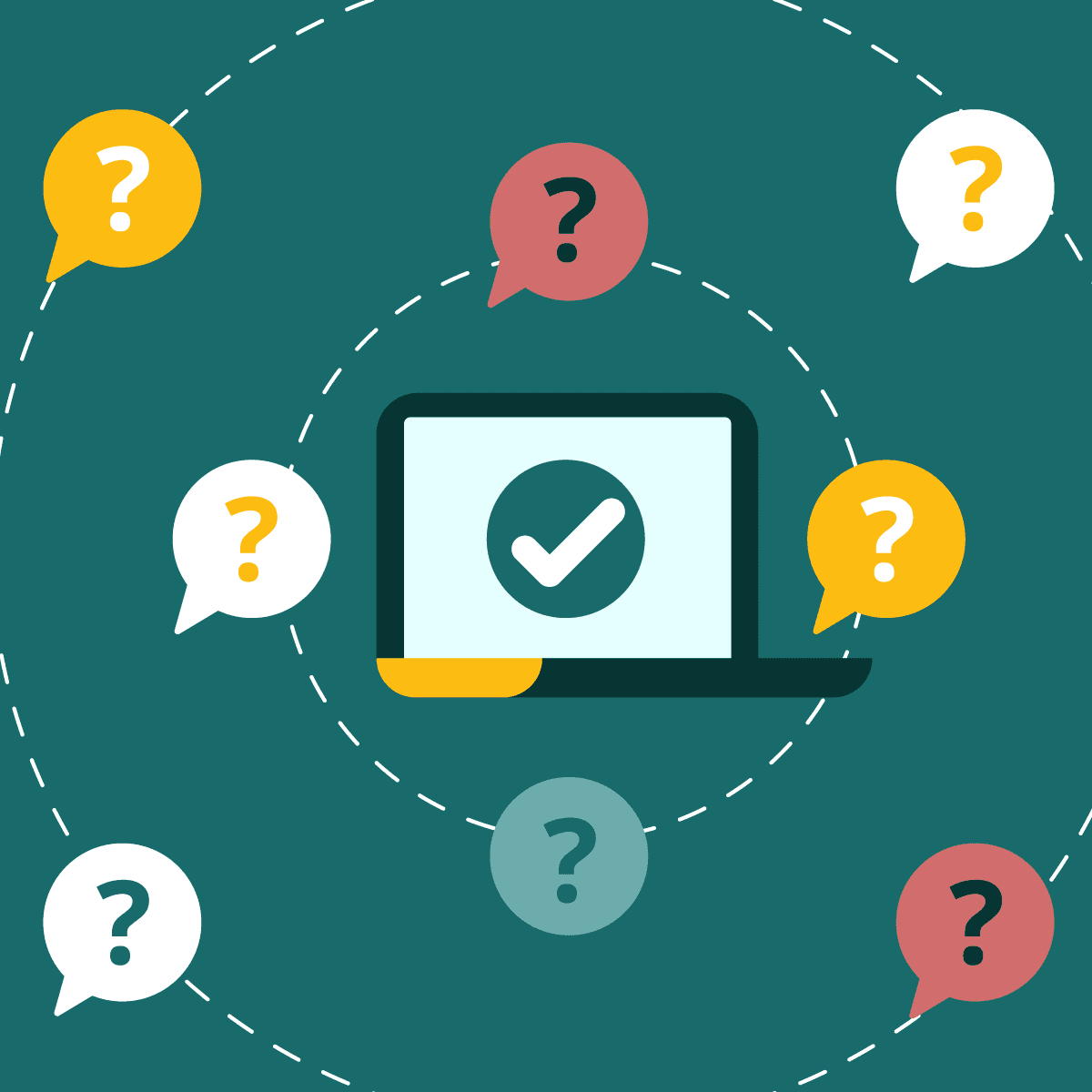IT Ticket Management Best Practices: Streamlining Support for Optimal Efficiency
IT ticket management is a crucial aspect of modern business operations. Effective handling of IT issues ensures smooth workflow and minimizes downtime. Implementing best practices in IT ticket management can significantly improve efficiency and enhance the overall customer experience.
Proper categorization and prioritization of tickets allow IT teams to address the most critical issues first. This approach helps organizations allocate resources effectively and maintain high service levels. Additionally, utilizing automation tools can streamline ticket resolution processes and reduce response times.
Clear communication channels between IT staff and end-users are essential for successful ticket management. Regular updates on ticket status and estimated resolution times keep stakeholders informed and satisfied. By adhering to these best practices, companies can optimize their IT support services and maintain a competitive edge in today's technology-driven business landscape.

Understanding IT Ticket Management Systems
IT ticket management systems streamline support processes and enhance customer service. These platforms centralize issue tracking, automate workflows, and provide valuable insights for IT teams.
Fundamentals of Ticketing Systems
Ticketing systems serve as the backbone of IT support operations. They capture and organize user requests, incidents, and problems in a structured format. Each ticket contains essential information such as priority, category, and status.
Tickets move through various stages, from creation to resolution. This workflow ensures nothing falls through the cracks. Many systems offer self-service portals, allowing users to submit and track their own tickets.
Effective ticketing systems facilitate communication between support staff and end-users. They often integrate with email, enabling updates to be sent automatically as tickets progress.
Evaluating Ticket Management Software
When selecting a ticketing system, consider scalability and customization options. The software should adapt to growing business needs and unique processes.
Integration capabilities are crucial. Look for solutions that connect with existing tools like CRM systems and knowledge bases.
User-friendliness is key for both support agents and end-users. An intuitive interface reduces training time and improves adoption rates.
Reporting features help managers track performance metrics and identify trends. Advanced analytics can provide insights for continuous improvement.
Consider cloud-based solutions for accessibility and reduced maintenance. On-premise options may be preferred for strict security requirements.
Key Features of Help Desk Software
Automation is a standout feature in modern help desk software. It can route tickets, send notifications, and even suggest solutions based on similar past issues.
Knowledge base integration allows agents to quickly access relevant information. This feature can also power self-service portals, reducing ticket volume.
SLA management tools help teams meet service level agreements by tracking response and resolution times. Escalation rules ensure critical issues receive prompt attention.
Mobile support is increasingly important. Look for solutions with responsive designs or dedicated apps for on-the-go ticket management.
Collaboration features like internal notes and ticket sharing facilitate teamwork among support staff. This is especially valuable for complex issues requiring multiple agents.
Best Practices for Managing Tickets
Efficient ticket management is crucial for streamlined IT operations. Implementing structured procedures, leveraging knowledge bases, and empowering users through self-service options can significantly enhance the ticketing process.
Effective Ticket Handling Procedures
Create a clear ticket categorization system to prioritize and route issues effectively. Use filters to sort tickets based on urgency, department, or technical area. Assign tickets to the most qualified team members to ensure prompt resolution.
Establish service level agreements (SLAs) for different ticket types. Set realistic response and resolution timeframes. Regularly monitor ticket progress and send automated updates to keep users informed.
Implement a standardized workflow for ticket lifecycle management. This should include steps for intake, assignment, troubleshooting, escalation, and closure. Document each step taken to resolve the issue within the ticket for future reference.
Knowledge Management Integration
Develop and maintain a comprehensive knowledge base. Include common issues, troubleshooting steps, and solutions. Encourage technicians to contribute their expertise and update articles regularly.
Link relevant knowledge base articles to tickets. This helps technicians quickly access pertinent information and promotes consistent problem-solving approaches. It also enables faster resolution of recurring issues.
Analyze ticket trends to identify gaps in the knowledge base. Create new articles or update existing ones based on frequently reported problems. This proactive approach reduces ticket volume over time.
Leveraging Self-Service Portals
Implement a user-friendly self-service portal. Include a searchable knowledge base, FAQs, and step-by-step guides for common issues. Provide clear instructions on how to submit a ticket if self-help resources are insufficient.
Integrate chatbots or AI-powered assistants to guide users through basic troubleshooting steps. This can resolve simple issues without human intervention and reduce the overall ticket load.
Encourage users to utilize the self-service portal through targeted communications and training sessions. Highlight the benefits of faster resolution times and 24/7 availability of resources.
Monitor self-service usage and gather feedback to continuously improve the portal. Regularly update content based on user interactions and emerging IT trends.
Optimizing Workflow and Communication
Efficient workflow and communication are crucial for effective IT ticket management. Streamlining processes and leveraging appropriate channels can significantly improve service delivery and user satisfaction.
Streamlining Service Requests with Workflow
Well-defined workflows enhance ticket resolution speed and accuracy. Implement automated routing based on ticket categories and priorities. This ensures requests reach the right teams quickly.
Use predefined templates for common issues to standardize responses and reduce handling time. Establish clear escalation paths for complex problems that require higher-level expertise.
Integrate self-service options into the workflow. Knowledge bases and FAQs can help users solve simple issues without creating tickets. This reduces the workload on support staff and improves response times for more critical issues.
Service Desk Communication Channels
Offer multiple channels for users to submit and track tickets. Common options include email, web portals, phone support, and chat systems. Each channel should integrate seamlessly with the central ticketing system.
Email remains a primary communication method. Set up auto-responders to acknowledge receipt and provide ticket numbers. Use email templates for status updates to maintain consistency and professionalism.
Implement a user-friendly web portal for ticket submission and tracking. This allows users to check status updates without contacting support directly, reducing follow-up inquiries.
Collaboration and Sharing Best Practices
Foster a culture of knowledge sharing among IT support staff. Encourage team members to document solutions for recurring issues in a centralized knowledge base.
Use internal chat tools for quick communication between team members. This facilitates faster problem-solving and reduces email clutter.
Implement regular team meetings to discuss challenging tickets and share insights. These sessions can improve overall service quality and identify areas for process improvement.
Create a feedback loop with end-users. Conduct satisfaction surveys after ticket closure to gather insights and refine support processes.
Enhancing IT Support with Metrics and Reporting
Effective metrics and reporting are crucial for optimizing IT support operations. They provide valuable insights into performance, efficiency, and areas for improvement.
Tracking Key Performance Indicators (KPIs)
KPIs serve as vital indicators of IT support effectiveness. Common KPIs include:
First Contact Resolution Rate
Average Response Time
Customer Satisfaction Score
Ticket Volume
Mean Time to Resolution
These metrics help teams assess their performance against Service Level Agreements (SLAs). IT managers can use KPIs to identify bottlenecks and allocate resources more efficiently.
Regular KPI reviews enable support teams to set realistic goals and track progress over time. This data-driven approach leads to continuous improvement in service quality.
Utilizing Dashboards for Real-Time Insights
Dashboards provide a visual representation of key metrics, offering real-time insights into IT support operations. They display critical information at a glance, allowing teams to:
Monitor ticket status and priority
Track SLA compliance
Identify emerging trends or issues
Custom dashboards can be tailored to specific roles or departments. This ensures that relevant data is easily accessible to those who need it most.
Real-time reporting enables proactive problem-solving. Support teams can quickly address potential issues before they escalate, improving overall service quality and customer satisfaction.
Maintaining Compliance and Continuous Improvement
Effective IT ticket management requires adherence to industry standards and ongoing enhancement of processes. Organizations must focus on compliance and service improvement to ensure optimal performance and customer satisfaction.
Adhering to ITIL and Service Operations
ITIL (Information Technology Infrastructure Library) provides a framework for IT service management best practices. Organizations should align their ticket management processes with ITIL guidelines to enhance efficiency and reliability. This includes implementing robust incident management procedures to address and resolve issues promptly.
Problem management is another crucial aspect of ITIL. It involves identifying and analyzing recurring issues to prevent future occurrences. By adopting ITIL principles, companies can reduce their backlog count and improve overall service quality.
Service operations play a vital role in maintaining compliance. Regular audits and performance evaluations help ensure adherence to established standards and procedures.
Change Management and Regular System Updates
Change management is essential for maintaining a stable IT environment. Organizations should establish a formal process for evaluating, approving, and implementing changes to their systems and infrastructure.
This process should include:
Risk assessment
Impact analysis
Testing procedures
Rollback plans
Regular system updates are crucial for maintaining security and performance. IT teams should schedule and implement patches and upgrades in a controlled manner to minimize disruptions.
Monitoring and documenting all changes helps maintain compliance and facilitates continuous improvement. Organizations should regularly review their change management processes to identify areas for enhancement and streamline operations.
Frequently Asked Questions
IT ticket management involves several key considerations for effective resolution and customer service. Common questions address core processes, industry standards, workload management, and communication practices.
What are the key components of an effective IT ticket resolution process?
Ticket intake and prioritization are crucial first steps. A clear escalation path helps route complex issues efficiently. Regular updates keep stakeholders informed. Knowledge base integration supports faster resolutions. Performance metrics track effectiveness and identify areas for improvement.
How does ITIL guidance influence ticket handling procedures?
ITIL emphasizes standardized processes for incident and problem management. It promotes a service-oriented approach focused on minimizing disruptions. ITIL encourages continuous improvement through regular review of ticket trends and resolution times.
What steps should be taken to efficiently manage ticket backlogs?
Regular backlog reviews help identify bottlenecks. Prioritization based on impact and urgency is essential. Assigning dedicated resources to address older tickets can reduce backlogs. Automating routine tasks frees up time for complex issues.
What etiquettes should IT support staff follow when communicating with customers through tickets?
Professional and empathetic language is crucial. Clear, jargon-free explanations help customers understand issues. Prompt responses and regular updates demonstrate attentiveness. Offering workarounds when immediate solutions aren't available shows proactivity.
How to handle tickets when there is no response from the customer?
Implement a follow-up schedule with reminders. Document all attempts to contact the customer. Set a policy for closing unresponsive tickets after a specified period. Provide clear instructions for reopening if needed.
What are the best strategies for categorizing different types of tickets in an IT ticketing system?
Use clear, consistent categories based on service areas or issue types. Implement subcategories for more detailed classification. Regularly review and update categories to reflect changing IT environments. Train staff on proper categorization to ensure accuracy.

Build a more powerful help desk with Risotto
Minimize Tickets and Maximize Efficiency
Simplify IAM and Strengthen Security
Transform Slack into a help desk for every department
Schedule your free demo



